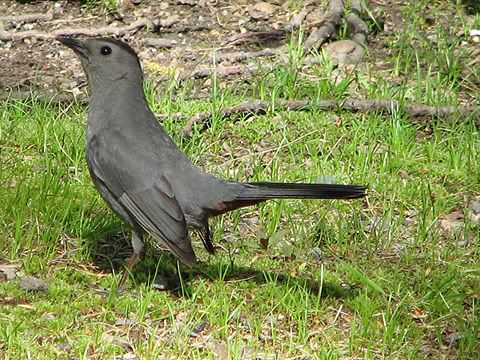365 Urban Species. #128: Gray Catbird

Photos by cottonmanifesto
Urban species #128: Gray catbird Dumetella carolinensis
The halfway point between Vernal Equinox and Summer Solstice passed a week ago, so soon we should cease our obsessive tally of Signs of Spring. But not yet. My partner, Alexis (cottonmanifesto), has been most anxious for one particular sign, and I am happy to report the first catbird of Spring 2006, Boston. I can also report the second through fiftieth, as once this bird arrives in the city, they become among the most common avian residents. Their habit of perching fairly low (around eye-level) and the fact that they tolerate close approaches by humans makes them one of the most observable migratory birds. That is, if you choose to notice it. Being fully dark and mostly gray, and preferring thick shrubs rather than trees to perch in, catbirds may be completely passed by, by busy city people.
My first encounter with a catbird was in a postage stamp sized backyard in the Boston borough of Brighton. On the other side of a rusty chain link fence was a scrubby vacant lot, overgrown with ailanthus, knotweed, and bittersweet. I heard a curious "meow," that was strangely uncatlike. To my surprise, a gray bird with shining black eyes was perched right at the edge of the tangled wire and vines, within an arm's length; We regarded one another for short peaceful moment, before it moved on to its business. From then on I looked forward to visits from this bold yet sneaky neighbor.
The catbird can be seen eating fruit from ornamental shrubs, or turning over leaf litter for insects. At other times it can be heard singing its heart out, in a riot of snippets from other bird's songs. The catbird is in the mockingbird family, but unlike the northern mockingbird, which sings its sampled melodies in repetitions of three, the catbird rapidly blurts unrepeated phrases. The effect is similar to a scat singer, or a jazz soloist. Walking along the muddy river, one can pass by half a dozen of these performances, feathered buskers who never ask for change.
